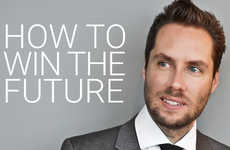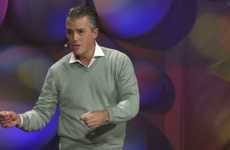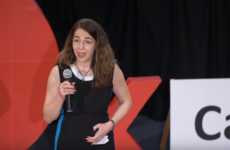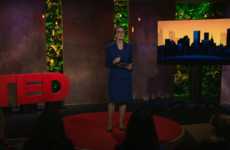
Need Inspiration?
Get inspired by 4,000+ keynote speaker videos & our founder, a top keynote speaker on innovation.
Tim Harford's Talk on Slow Multitasking Boasts Famous Examples
Kalin Ned — January 29, 2019 — Keynote Trends
References: timharford & ted
The speaker who delivers this highly inspirational talk on slow multitasking is Tim Harford -- a journalist, broadcaster, and economist who has taken over the Undercover Economist column for the Financial Times.
During his keynote, he addresses the question of multitasking -- whether it is beneficial or not as an activity. Harford holds the belief that actually if done right, the art of doing multiple things at once is a good thing. His speech calls attention to something he describes as "slow-motion multitasking" and which is later identified in the TED talk as "a powerful way to organize our creative lives."
To support his argument, Tim Harford draws on a number of examples -- from Einstein to Darwin. The speaker holds the belief that if one undertakes multiple projects at once and jumps back and forth between them as mood or situation allows, it is not only good for creativity but also productivity. He agrees that this might feel counterintuitive as people resort to multitasking "out of desperation" and lack of time. However, the talk on slow multitasking is backed by a long research project by Bernice Eiduson that discovered an emerging pattern in the working habits of 40 leading scientists -- they all frequently changed the topics of their research papers.
Tim Harford believes that "slow-motion multitasking among creative people is ubiquitous." It is derived from incessantly taking things outside of original contexts and inserting them in new ones. Moreover, it allows for the interdisciplinary implementation of various skill sets and it can provide assistance when we are experiencing a creative block.
Of course, to defend his benefit-rich theory, Tim Harford addresses an obvious objection during his talk on slow multitasking -- how do we stop the multitude of projects of becoming overwhelming? The speaker calls attention to American choreographer Twyla Tharp. She has a magnanimous career that dabbles in different creative fields and the successful execution of her projects relies on an organized system. Her method consists of a series of labeled boxes -- one for each project, which she periodically fills with DVDs, books, magazine cuttings, physical objects and the like to serve as a source of creative inspiration.
At the end of the day, what Tim Harford's talk on slow multitasking really pushes is embracing the activity "not because you're in a hurry, but because you're in no hurry at all."
During his keynote, he addresses the question of multitasking -- whether it is beneficial or not as an activity. Harford holds the belief that actually if done right, the art of doing multiple things at once is a good thing. His speech calls attention to something he describes as "slow-motion multitasking" and which is later identified in the TED talk as "a powerful way to organize our creative lives."
To support his argument, Tim Harford draws on a number of examples -- from Einstein to Darwin. The speaker holds the belief that if one undertakes multiple projects at once and jumps back and forth between them as mood or situation allows, it is not only good for creativity but also productivity. He agrees that this might feel counterintuitive as people resort to multitasking "out of desperation" and lack of time. However, the talk on slow multitasking is backed by a long research project by Bernice Eiduson that discovered an emerging pattern in the working habits of 40 leading scientists -- they all frequently changed the topics of their research papers.
Tim Harford believes that "slow-motion multitasking among creative people is ubiquitous." It is derived from incessantly taking things outside of original contexts and inserting them in new ones. Moreover, it allows for the interdisciplinary implementation of various skill sets and it can provide assistance when we are experiencing a creative block.
Of course, to defend his benefit-rich theory, Tim Harford addresses an obvious objection during his talk on slow multitasking -- how do we stop the multitude of projects of becoming overwhelming? The speaker calls attention to American choreographer Twyla Tharp. She has a magnanimous career that dabbles in different creative fields and the successful execution of her projects relies on an organized system. Her method consists of a series of labeled boxes -- one for each project, which she periodically fills with DVDs, books, magazine cuttings, physical objects and the like to serve as a source of creative inspiration.
At the end of the day, what Tim Harford's talk on slow multitasking really pushes is embracing the activity "not because you're in a hurry, but because you're in no hurry at all."
6
Score
Popularity
Activity
Freshness
















